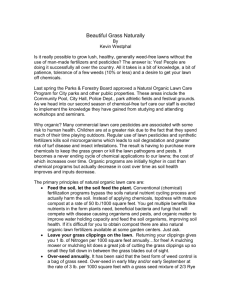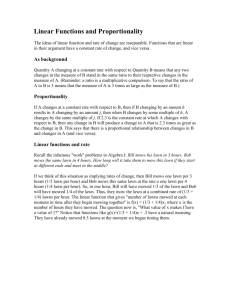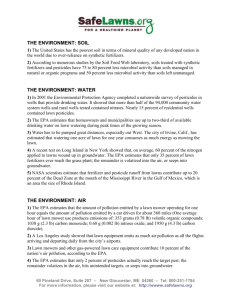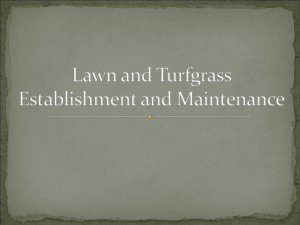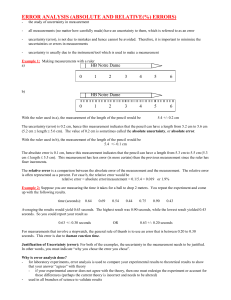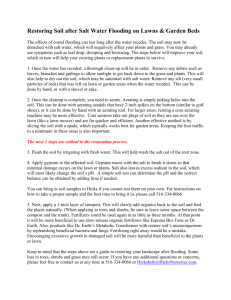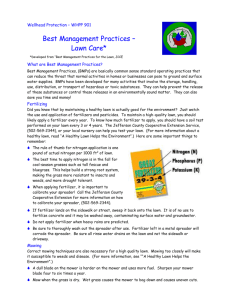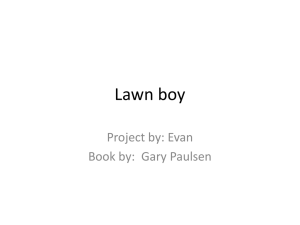Wellhead Protection - Louisville Water Company
advertisement
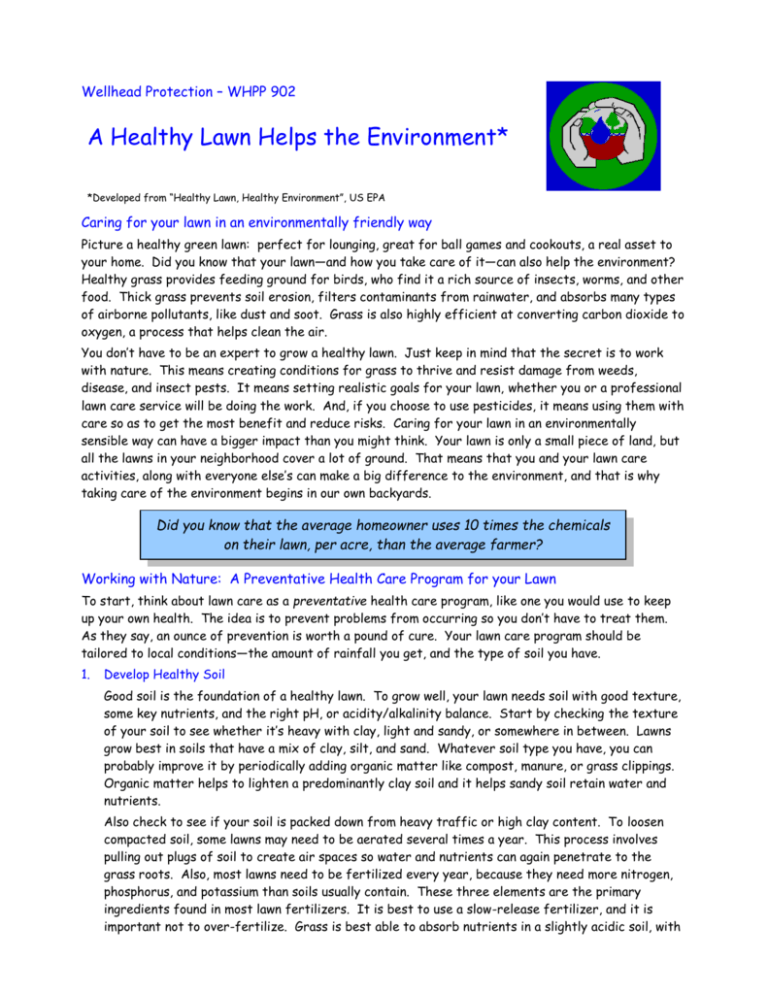
Wellhead Protection – WHPP 902 A Healthy Lawn Helps the Environment* *Developed from “Healthy Lawn, Healthy Environment”, US EPA Caring for your lawn in an environmentally friendly way Picture a healthy green lawn: perfect for lounging, great for ball games and cookouts, a real asset to your home. Did you know that your lawn—and how you take care of it—can also help the environment? Healthy grass provides feeding ground for birds, who find it a rich source of insects, worms, and other food. Thick grass prevents soil erosion, filters contaminants from rainwater, and absorbs many types of airborne pollutants, like dust and soot. Grass is also highly efficient at converting carbon dioxide to oxygen, a process that helps clean the air. You don’t have to be an expert to grow a healthy lawn. Just keep in mind that the secret is to work with nature. This means creating conditions for grass to thrive and resist damage from weeds, disease, and insect pests. It means setting realistic goals for your lawn, whether you or a professional lawn care service will be doing the work. And, if you choose to use pesticides, it means using them with care so as to get the most benefit and reduce risks. Caring for your lawn in an environmentally sensible way can have a bigger impact than you might think. Your lawn is only a small piece of land, but all the lawns in your neighborhood cover a lot of ground. That means that you and your lawn care activities, along with everyone else’s can make a big difference to the environment, and that is why taking care of the environment begins in our own backyards. Did you know that the average homeowner uses 10 times the chemicals on their lawn, per acre, than the average farmer? Working with Nature: A Preventative Health Care Program for your Lawn To start, think about lawn care as a preventative health care program, like one you would use to keep up your own health. The idea is to prevent problems from occurring so you don’t have to treat them. As they say, an ounce of prevention is worth a pound of cure. Your lawn care program should be tailored to local conditions—the amount of rainfall you get, and the type of soil you have. 1. Develop Healthy Soil Good soil is the foundation of a healthy lawn. To grow well, your lawn needs soil with good texture, some key nutrients, and the right pH, or acidity/alkalinity balance. Start by checking the texture of your soil to see whether it’s heavy with clay, light and sandy, or somewhere in between. Lawns grow best in soils that have a mix of clay, silt, and sand. Whatever soil type you have, you can probably improve it by periodically adding organic matter like compost, manure, or grass clippings. Organic matter helps to lighten a predominantly clay soil and it helps sandy soil retain water and nutrients. Also check to see if your soil is packed down from heavy traffic or high clay content. To loosen compacted soil, some lawns may need to be aerated several times a year. This process involves pulling out plugs of soil to create air spaces so water and nutrients can again penetrate to the grass roots. Also, most lawns need to be fertilized every year, because they need more nitrogen, phosphorus, and potassium than soils usually contain. These three elements are the primary ingredients found in most lawn fertilizers. It is best to use a slow-release fertilizer, and it is important not to over-fertilize. Grass is best able to absorb nutrients in a slightly acidic soil, with a pH of 6.5 to 7.0. Soil that is too acidic can be “sweetened” with lime; soil that is not acid enough can be made “sour” by adding sulfur. Have your soil tested periodically to see whether it needs more organic matter or the pH adjusted. The Jefferson County Extension Office, (502-5692344), or local nursery can provide soil testing or soil kits for testing. If a professional lawn service takes care of your lawn, make sure it takes these same steps to develop good soil. 2. Choose a grass type that thrives in your climate. The right type of grass—one that suits your needs and likes the local weather—will always give better results. New grass mixtures come out on the market every year. Ask your county extension agent or your local nursery for recommendations. 3. Mow high, often, and with sharp blades. Keeping your lawn a bit long will produce stronger, healthier grass with fewer pest problems. A lawn’s ideal length will vary with the type of grass, but many turf grass species are healthiest when kept between 2½ to 3½ inches. It’s also important to mow with sharp blades to prevent tearing and injuring the grass. And it is best to mow often. The rule of thumb is to mow often enough that you never cut more than 1/3 of the height of the grass blades. Leave short clippings on the grass, where they recycle nitrogen. 4. Water deeply, but not too often. Watering properly will help your lawn grow deep roots that make it stronger and less vulnerable to drought. It is best to water only when the lawn really needs it, and then to water slowly and deeply. Water only when the lawn begins to wilt from dryness—when the color dulls and footprints stay compressed for more than a few seconds. Try to water your lawn in a way that imitates a slow, soaking rain by using trickle irrigation, soaker hoses, or other water conserving methods. Try to water in the early morning, especially during hot summer months, to reduce evaporation. You can place a pie plate in the line of the spray to measure how much water has been applied-- usually about 1 inch of water is the best for your lawn. 5. Correct thatch build-up. When thatch gets too thick—deeper than ½ inch—it prevents water and nutrients from penetrating to the soil and grass roots. Some grasses tend to form a thick layer of thatch, while overuse use of fertilizers can also create a heavy layer of thatch. You can reduce thatch by raking the lawn or using a machine that slices through the thatch. Sprinkling a thin layer of topsoil or compost over the lawn will also help. 6. Set realistic goals. Did you know that a lawn with 15% weeds can look practically weed-free to the average observer? Even a healthy lawn is likely to have some weeds or insect pests. It will also have beneficial insects and other organisms that help keep pests under control. Also realize that some areas of your lawn are just not conducive to growing grass. Use a ground cover or mulch instead. Check out the mowing gauge on the next page to test your mower height and thatch depth! Wellhead Protection Coordinator Louisville Water Company 550 S. 3rd Street Louisville, KY 40202 502-569-3600 ext. 1809 A publication of the Local Planning Team, Public Education

